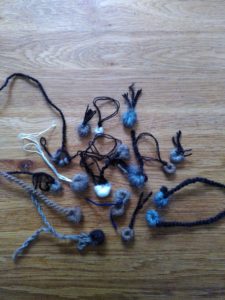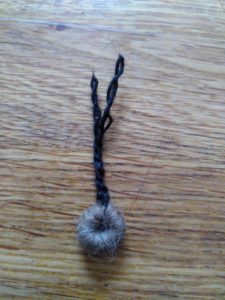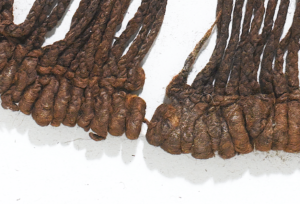Search the Blog
Latest Comments
Bounty Hunter Seeds
Tomato Seeds.
02. November 2024
Thank you for taking the time to share such valuable insights! This post is packed with helpful info...
Miriam Griffiths
Blog Pause...
01. November 2024
Hope you have a most wonderful time! One day, I really should get organised and join you.
Katrin
Cardboard Churches!
18. Oktober 2024
I didn't know there's foldable models - I will have a look into that, thank you!
Katrin
Cardboard Churches!
18. Oktober 2024
I'm very happy that you enjoyed it, and hope you will have lots of fun with the models! Hanging them...
Natalie Ferguson
Cardboard Churches!
17. Oktober 2024
Isn't this the happiest thing I've met today! You may guess that one or two will be winging their wa...
So many tests.
One of the things when doing a reproduction or reconstruction that always happens? More testing and trying out methods and materials than you'd have anticipated.
There's often that nagging feeling that there might be a better method. Or a better material. So you're looking at different ways of doing stuff, sometimes completely different, sometimes just a slight variation of what you tried before. At some point, though, there's a working method that does, yes, work - and then it's best to stop messing around and stop looking for something even better, even neater, even closer to the original... even though it may be tempting.
The optimal outcome is when you get to do enough testing beforehand that you end up with a really nice method when starting the actual piece... and that, usually, means more preliminary tests than planned for. Especially when it's a small but important thing that, on its own, is made rather quickly, testing it once more, practising it again, and trying out another fibre can be sort of addictive.
Case in point? The wool-wrapped rings on the bottom edge of the Egtved skirt. Yes, I did get some practice in with making such rings on the belt tassel... but they were still rather awkward to make, took a long time, and I was not overly happy with how the fibre behaved while working the rings.
Especially "took a long time" is a key thing here. With more than 300 rings, each minute that one of the rings takes will make a difference of more than 5 hours total work time. One minute adds up. The rings on the original also look very nice and neat... which can be achieved by picking the right wool.

There's a lot of different possibilities to make these rings, starting from what happens with the ends of each cord to how they are inserted into the fibre wrap or how the fibre is wrapped around them. My current favourite process involves a skewer stick, two needles, and longer ends to work the rings, and its end result looks like this:

Here's a picture of some of the original rings for comparison:
[caption id="attachment_6529" align="alignnone" width="300"] Detail from this image from the Danish National Museum.
Detail from this image from the Danish National Museum.
So... what do you think? Is it a match?
There's often that nagging feeling that there might be a better method. Or a better material. So you're looking at different ways of doing stuff, sometimes completely different, sometimes just a slight variation of what you tried before. At some point, though, there's a working method that does, yes, work - and then it's best to stop messing around and stop looking for something even better, even neater, even closer to the original... even though it may be tempting.
The optimal outcome is when you get to do enough testing beforehand that you end up with a really nice method when starting the actual piece... and that, usually, means more preliminary tests than planned for. Especially when it's a small but important thing that, on its own, is made rather quickly, testing it once more, practising it again, and trying out another fibre can be sort of addictive.
Case in point? The wool-wrapped rings on the bottom edge of the Egtved skirt. Yes, I did get some practice in with making such rings on the belt tassel... but they were still rather awkward to make, took a long time, and I was not overly happy with how the fibre behaved while working the rings.
Especially "took a long time" is a key thing here. With more than 300 rings, each minute that one of the rings takes will make a difference of more than 5 hours total work time. One minute adds up. The rings on the original also look very nice and neat... which can be achieved by picking the right wool.

There's a lot of different possibilities to make these rings, starting from what happens with the ends of each cord to how they are inserted into the fibre wrap or how the fibre is wrapped around them. My current favourite process involves a skewer stick, two needles, and longer ends to work the rings, and its end result looks like this:

Here's a picture of some of the original rings for comparison:
[caption id="attachment_6529" align="alignnone" width="300"]
 Detail from this image from the Danish National Museum.
Detail from this image from the Danish National Museum.So... what do you think? Is it a match?
Comments
No comments made yet. Be the first to submit a comment



